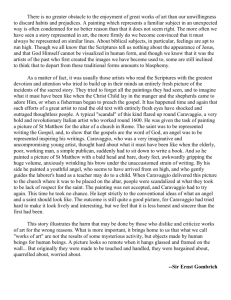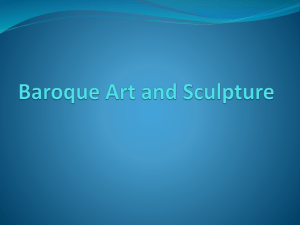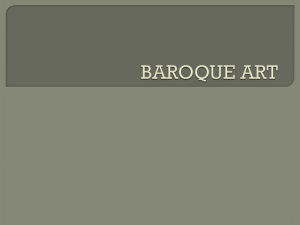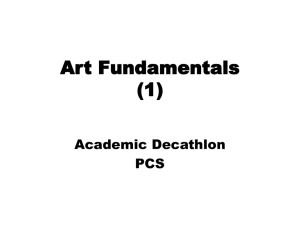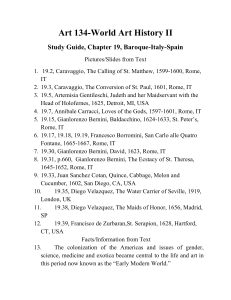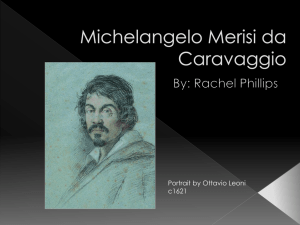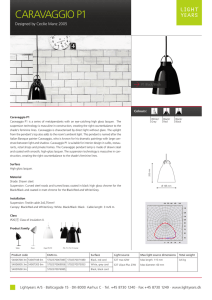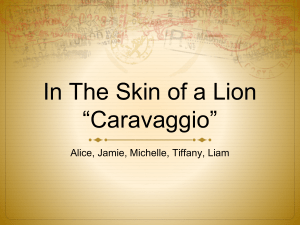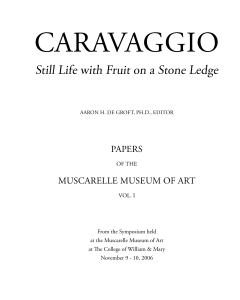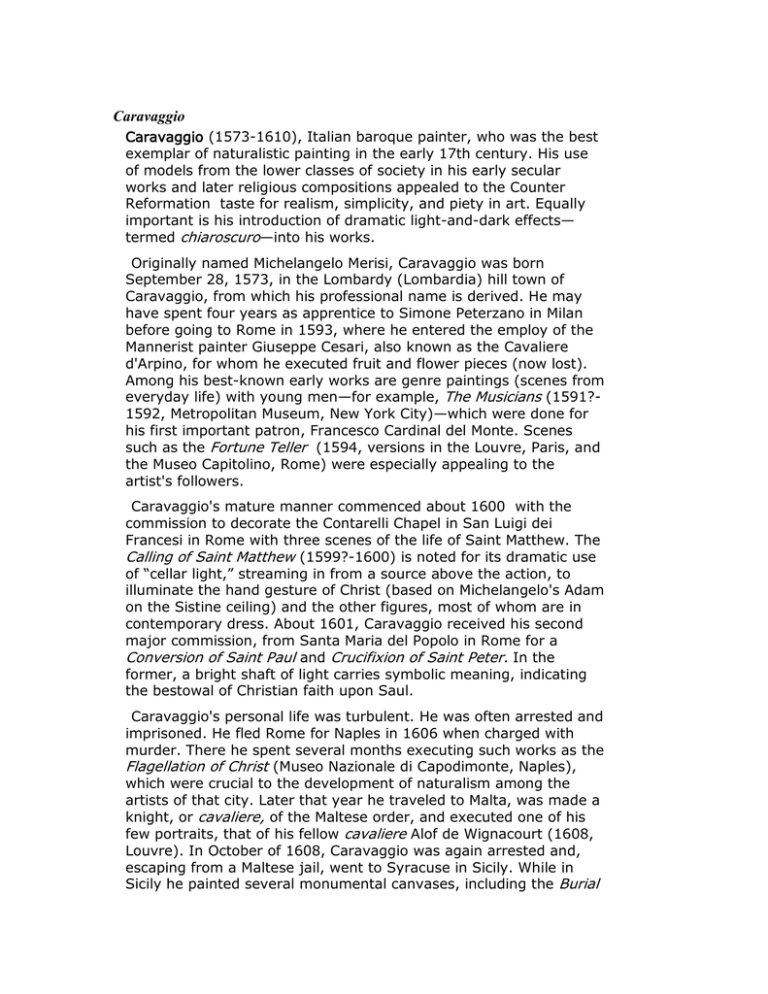
Caravaggio
Caravaggio (1573-1610), Italian baroque painter, who was the best
exemplar of naturalistic painting in the early 17th century. His use
of models from the lower classes of society in his early secular
works and later religious compositions appealed to the Counter
Reformation taste for realism, simplicity, and piety in art. Equally
important is his introduction of dramatic light-and-dark effects—
termed chiaroscuro—into his works.
Originally named Michelangelo Merisi, Caravaggio was born
September 28, 1573, in the Lombardy (Lombardia) hill town of
Caravaggio, from which his professional name is derived. He may
have spent four years as apprentice to Simone Peterzano in Milan
before going to Rome in 1593, where he entered the employ of the
Mannerist painter Giuseppe Cesari, also known as the Cavaliere
d'Arpino, for whom he executed fruit and flower pieces (now lost).
Among his best-known early works are genre paintings (scenes from
everyday life) with young men—for example, The Musicians (1591?1592, Metropolitan Museum, New York City)—which were done for
his first important patron, Francesco Cardinal del Monte. Scenes
such as the Fortune Teller (1594, versions in the Louvre, Paris, and
the Museo Capitolino, Rome) were especially appealing to the
artist's followers.
Caravaggio's mature manner commenced about 1600 with the
commission to decorate the Contarelli Chapel in San Luigi dei
Francesi in Rome with three scenes of the life of Saint Matthew. The
Calling of Saint Matthew (1599?-1600) is noted for its dramatic use
of “cellar light,” streaming in from a source above the action, to
illuminate the hand gesture of Christ (based on Michelangelo's Adam
on the Sistine ceiling) and the other figures, most of whom are in
contemporary dress. About 1601, Caravaggio received his second
major commission, from Santa Maria del Popolo in Rome for a
Conversion of Saint Paul and Crucifixion of Saint Peter. In the
former, a bright shaft of light carries symbolic meaning, indicating
the bestowal of Christian faith upon Saul.
Caravaggio's personal life was turbulent. He was often arrested and
imprisoned. He fled Rome for Naples in 1606 when charged with
murder. There he spent several months executing such works as the
Flagellation of Christ (Museo Nazionale di Capodimonte, Naples),
which were crucial to the development of naturalism among the
artists of that city. Later that year he traveled to Malta, was made a
knight, or cavaliere, of the Maltese order, and executed one of his
few portraits, that of his fellow cavaliere Alof de Wignacourt (1608,
Louvre). In October of 1608, Caravaggio was again arrested and,
escaping from a Maltese jail, went to Syracuse in Sicily. While in
Sicily he painted several monumental canvases, including the Burial
of Saint Lucy (1608, Santa Lucia, Syracuse) and the Raising of
Lazarus (1609, Museo Nazionale, Messina). These were multi-
figured compositions of great drama achieved through dark
tonalities and selective use of lighting. These works were among
Caravaggio's last, for the artist died on the beach at Port'Ercole in
Tuscany (Toscana) on July 18, 1610, of a fever contracted after a
mistaken arrest.
Although the use of both realistic types and strong chiaroscuro
originated in northern Italian art of the previous century, Caravaggio
brought new life and immediacy to these aspects of painting, with
which he effected a transformation of anticlassical Mannerism in
early baroque Rome. Despite his personal protestations that nature
was his only teacher, Caravaggio obviously studied and assimilated
the styles of the High Renaissance masters, especially that of
Michelangelo. Caravaggio's impact on the art of his century was
considerable. He discouraged potential students, but throughout the
century a naturalist school flourished in Italy and abroad based on
an enthusiastic emulation of his style.
See also Baroque Art and Architecture.
Contributed By:
Edward J. Sullivan
1
1"Caravaggio."Microsoft® Encarta® Encyclopedia 2001. © 1993-2000 Microsoft
Corporation. All rights reserved.

